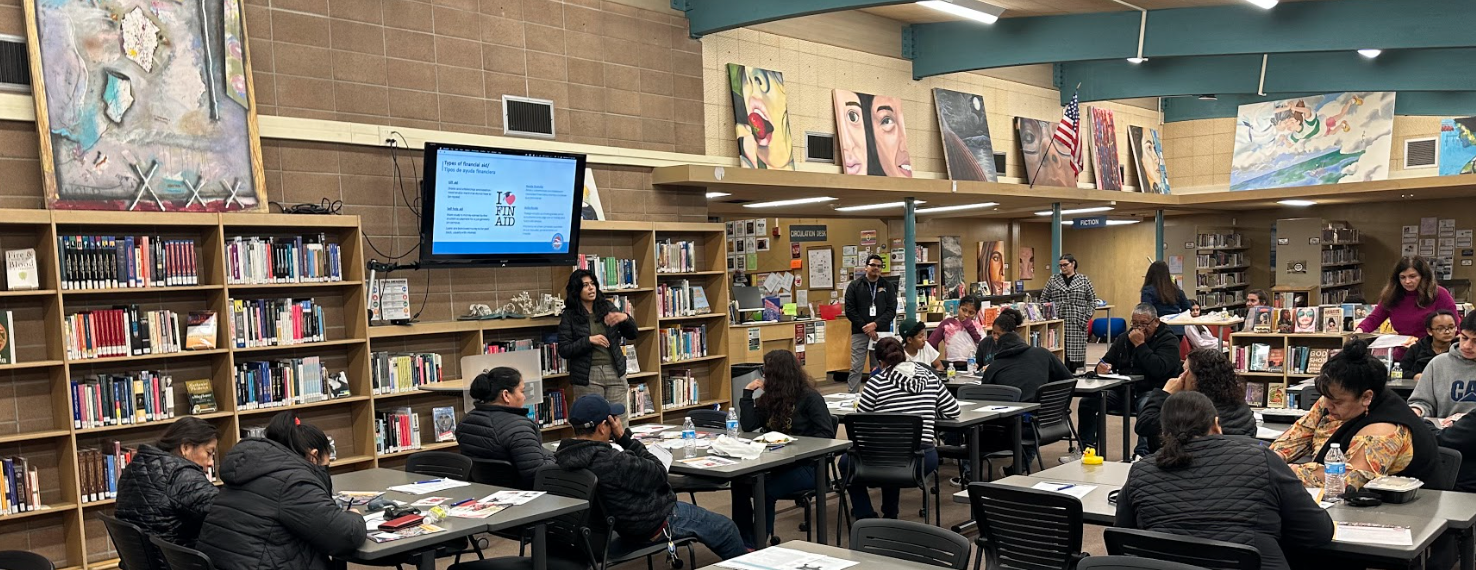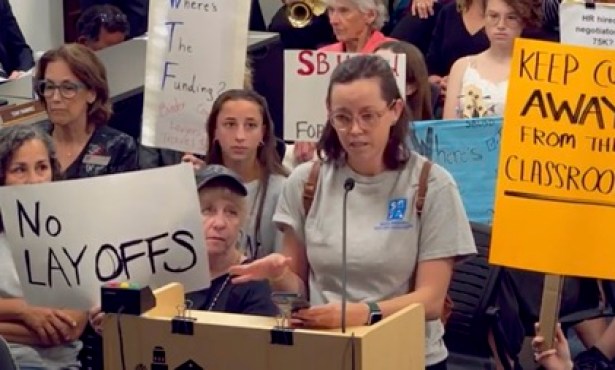English Learners and Their Families Work with Santa Barbara School District to Succeed
The 'Un Día a la Vez' Classes (One Day at a Time) Are a Popular Program at San Marcos

Students entering Santa Barbara schools as English learners must begin a journey that typically takes five to seven years, from the point they first enroll until they are finally classified as English proficient.
The path is often challenging for the students and their families, especially for newcomers to the United States who are still acclimating to the school system and culture. For some, it can be a traumatic process involving feelings of loneliness and isolation.
Fifteen percent of registered students in the district are formerly classified as Emergent Multilingual Learners (EML). As Anna Philoefer, director of the school system’s Equity & Multilingual Learners Services, recounted, “There isn’t one classroom in our district that doesn’t have an emergent multilingual learner.”
The Santa Barbara Unified School District regularly monitors these students’ progress, but in an effort to better support them, the district also focuses on working with their parents. One way it does that is through a parents’ advisory committee that makes recommendations for improving their children’s learning experiences. At the Board of Education meeting on May 23, parents who serve on the committee presented their newest recommendations in Spanish.
This year, the committee recommended creating strategies to increase support for special education students and their families; expand support for all multilingual families; increase student safety, especially to prevent bullying; and to recruit more multilingual and multicultural counselors to address all EML students’ social-emotional needs.

This year, the district has budgeted $22.1 million for its Local Control and Accountability Plan (LCAP), a list of goals it is specifically held accountable for achieving. Part of this money will go to answering the parents’ committee recommendations, and during the summer, district leadership will work with their “thought partners” to develop ways to make those goals a reality.
This school year, the district implemented some goals parents had first recommended in the 2018-19 school year, including establishing at least one family liaison to support EMLs at each school. When the committee first made the ask, there were only a handful of family engagement liaisons across the district, and no consistency across sites.
As of this year, schools are now also staffed with in-house clinicians dedicated to responding to the mental health needs of newcomers, as opposed to the district looking to community partners for support when needs are identified. “If students have a sound mind, they will perform better in school,” said committee member Odilia Gutierrez, a Goleta Valley Junior High School parent.
One of the most significant expansions in EML instruction, though, came through adopting specific criteria to ensure the district’s highly anticipated new literacy curriculum is linguistically responsive to EMLs and fosters cross-linguistic connections between English and Spanish.
“Our students are already bringing a gift with them to school, which is another language,” Philoefer said, “and we’re going to build on that through literacy learning.”
Emergent multilingual learners who are not able to reclassify after their primary school years are known as “long-term English learners” when they reach high school. “We have a lot of students who have been English learners for a long time,” said Dare Holdren, principal of San Marcos High School.
This year, the school added two family liaisons for their EML students, but Holdren found that its greatest success came because of its multilingual family engagement. Between January and April, San Marcos held four classes in a program known as “Un día a la vez,” specifically for families whose students are improving their English — 150 students at San Marcos are EMLs, 48 of whom were newcomers this year, a larger number than normal for the school.
The classes helped familiarize EML families with the tools needed to support their kids. The Un día a la vez program received overwhelmingly positive feedback, Holdren said, and will be held annually moving forward.
The district is looking to potentially expand the program to other schools. “As an immigrant who came to America as a student, I know firsthand how challenging it can be to move to a new country,” said Superintendent Dr. Hilda Maldonado. “It is essential that we continue to find ways to help make our EML students and families feel welcome and successful.”




You must be logged in to post a comment.